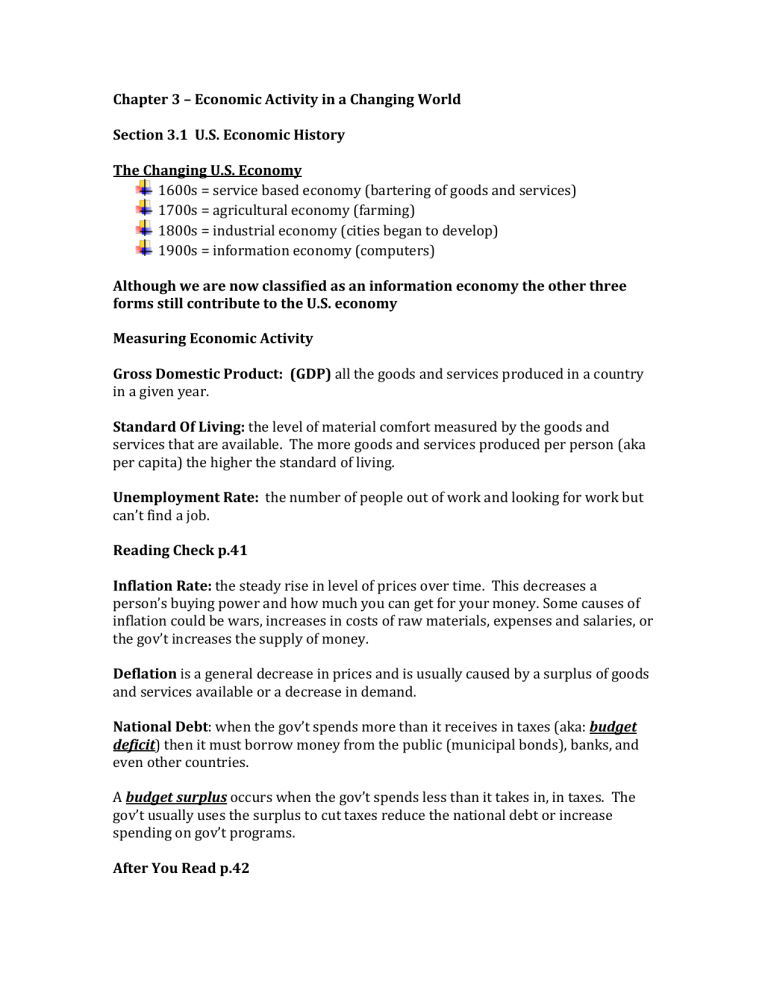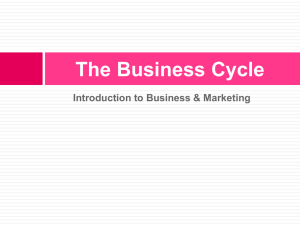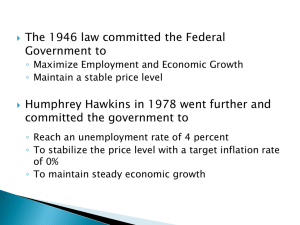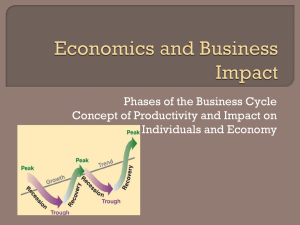
Chapter 3 – Economic Activity in a Changing World Section 3.1 U.S. Economic History The Changing U.S. Economy 1600s = service based economy (bartering of goods and services) 1700s = agricultural economy (farming) 1800s = industrial economy (cities began to develop) 1900s = information economy (computers) Although we are now classified as an information economy the other three forms still contribute to the U.S. economy Measuring Economic Activity Gross Domestic Product: (GDP) all the goods and services produced in a country in a given year. Standard Of Living: the level of material comfort measured by the goods and services that are available. The more goods and services produced per person (aka per capita) the higher the standard of living. Unemployment Rate: the number of people out of work and looking for work but can’t find a job. Reading Check p.41 Inflation Rate: the steady rise in level of prices over time. This decreases a person’s buying power and how much you can get for your money. Some causes of inflation could be wars, increases in costs of raw materials, expenses and salaries, or the gov’t increases the supply of money. Deflation is a general decrease in prices and is usually caused by a surplus of goods and services available or a decrease in demand. National Debt: when the gov’t spends more than it receives in taxes (aka: budget deficit) then it must borrow money from the public (municipal bonds), banks, and even other countries. A budget surplus occurs when the gov’t spends less than it takes in, in taxes. The gov’t usually uses the surplus to cut taxes reduce the national debt or increase spending on gov’t programs. After You Read p.42 Section 3.2 The Business Cycle (Figure 3.1 p.44) The U.S. economy is shaped by a mix of public and private forces. Individuals drive the market for goods and services. The gov’t controls our fiscal policy (taxes and spending) and the Federal Reserve (aka “the FED”) controls the money supply and interest rates aka monetary policy. The Four Stages of the Business Cycle (the ups and downs of business) Expansion (growth), peak (prosperity), contraction (slowdown) and trough (lowest point) are the four phases during a normal business cycle. Prosperity: unemployment is low, production of goods and services is high and new businesses open. Wages are usually higher so workers have more money to spend and drive the economy. Recession: when the economy slows down drastically (more than is usual) and there are less jobs available (unemployment rate) so people have less to spend on G&S so business produce less (GDP) and therefore need less workers. This is called the ripple effect. Depression: a severe recession that lasts for years. A depression can affect just one country but usually spreads to other countries that are connected through trade. The Great Depression – Black Tuesday – October 29, 1929: The stock market crashed. GDP was cut by almost 50%, unemployment rose nearly 800% (12.8 million meaning one out of every four workers was jobless. Industrial wages dropped from 55 cents per hour to 5 cents per hour. Many banks failed and the money supply fell by one-third. Reading Check p.46 Recovery: a period of economic growth after a recession or depression. People start going back to work and there is an increase in consumer spending which causes business to produce more and allows them to hire more workers (i.e. the ripple effect). Some businesses innovate (bring new goods and services) causing economic activity to soar. After You Read p.47







